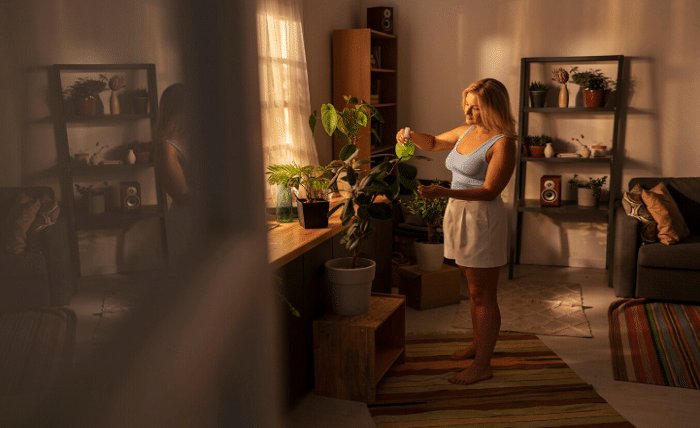
Micro-living has become a hallmark of modern urban life, and it’s not hard to understand why. With cities growing denser, housing prices soaring, and the need for sustainable solutions ever-pressing, the allure of tiny apartments and compact homes is stronger than ever. Micro-living, as a housing trend, is shaping not only how we live but also how we behave, adapt, and even perceive space. This evolution has had a profound impact on our psychology, social dynamics, and our approach to designing living environments, including everything from kitchen setups to the type of furniture we use. It’s an intriguing journey into how space—or the lack thereof—is altering our daily lives in unexpected ways.
Micro-living has not only transformed urban landscapes but also influenced personal lifestyles, encouraging a shift towards minimalism and sustainability. As people adapt to smaller spaces, they often find themselves prioritizing experiences over possessions, fostering a sense of community and environmental consciousness. This trend is further supported by innovative housing solutions like My ADU tiny houses, which offer customizable and efficient living spaces that cater to the growing demand for compact, yet functional homes. These tiny houses provide an opportunity for individuals to embrace a simpler lifestyle while still enjoying the comforts of modern living, ultimately reshaping the way we perceive and interact with our living environments.
Historically, our perception of home was rooted in expansiveness—sprawling lawns, generous rooms, and ample storage. However, as urbanization took hold, and concerns about the environment rose, the shift to smaller, more efficient living spaces became inevitable. Today, tiny homes, capsule apartments, and micro-apartments are not just options but a necessity in many of the world’s most populous cities. The cultural trend toward minimalism and decluttering has also fed into this movement. Rather than focusing on collecting more, people are increasingly seeking to live with less, which fits perfectly with the ideals of micro-living.
Living in smaller spaces, however, is about much more than just the size of your home. It’s about the impact that confined environments have on the mind. Surprisingly, micro-living can bring several positive psychological effects. For one, it encourages minimalism and the need to prioritize what truly matters. With limited space, you simply can’t hold on to every old trinket or impulse buy—it forces you to be mindful about your choices. People living in small spaces often become experts at problem-solving, finding clever ways to make things fit and figuring out how to make the most of every square inch. This type of environment also pushes individuals to focus on experiences over possessions, shifting value from material objects to moments and memories.
On the flip side, though, there are undeniable challenges. For some, the lack of space can contribute to feelings of stress, anxiety, or even claustrophobia. When you don’t have a personal corner to retreat to after a long day, the walls of a tiny home can start to feel like they’re closing in. Noise pollution, too, can become a major issue, as smaller spaces offer little in the way of barriers. Privacy, particularly in shared living arrangements, is another frequent casualty of the micro-living model. Maintaining mental well-being under such conditions requires strategies to mitigate these challenges—everything from the colors on the walls to the amount of natural light matters. Thoughtful design and intentional use of color and lighting can make a small space feel open and inviting, reducing the psychological strain that often comes with confined environments.
Interpersonal relationships are also redefined in small spaces. When two or more people share a tiny apartment, intimacy becomes a double-edged sword. On one hand, you’re constantly in each other’s company, which can promote closeness and improve communication. On the other hand, the lack of space makes it harder to avoid conflicts when they arise—there’s nowhere to go to cool off or take a breather. Successful cohabitation in a micro-living setup often requires couples or roommates to adapt their routines and establish clear boundaries to ensure harmony. These spaces demand flexibility and a willingness to compromise, skills that undoubtedly strengthen interpersonal dynamics but can also be a stressor when not managed well.
Beyond individual homes, micro-living changes how we interact with our communities. When you live in a very small space, public areas start to feel like extensions of your home. People are more likely to spend time in community hubs, coworking spaces, parks, and cafes—seeking a balance between their compact personal quarters and the wider, open world. In this way, micro-living encourages social engagement, driving people to look outside their homes for social interaction and space to breathe. Different cultures have varied approaches to micro-living, and how people adapt socially can depend a lot on local norms and community structures. In densely packed Asian cities, for example, shared spaces and communal living are an accepted and longstanding part of life, whereas in Western societies, adjusting to this new normal might take a bit more time.
Of course, one of the most important elements that make micro-living feasible is furniture design. Adaptive, space-saving furniture plays a critical role in making tiny homes functional. The rise of innovative designs like Murphy beds, foldable tables, trundle bed frames, and modular shelving has revolutionized the way we think about space. These pieces aren’t just furniture; they’re tools that enable people to use their living space flexibly, morphing a bedroom into an office or a living room into a dining area at the drop of a hat. Multi-functional pieces that combine storage with usability are particularly important, as they solve multiple problems at once—providing a place to keep things out of sight while also being a surface, a seat, or a bed.
The influence of these adaptive pieces on daily routines cannot be overstated. In a traditional home, you have distinct areas for every activity—cooking, sleeping, working. In a micro-apartment, each area has to do double or even triple duty. The right kind of furniture is crucial to facilitating this kind of flexibility. Think of a small kitchen table that folds away after breakfast or a couch that turns into a guest bed when needed. These transformations shape daily habits, encouraging a more organized, thoughtful approach to living. It’s not just about saving space—it’s about making space work for you in new and creative ways, with restaurant furniture-like practicality and durability often making their way into residential designs for their space efficiency.
There’s also a sustainability angle to all of this. Micro-living, by its nature, involves less consumption—fewer things to buy, less space to heat or cool, and reduced waste. The furniture that supports this kind of lifestyle is often built with sustainability in mind, using eco-friendly materials or being designed for long-term use. Cost-effectiveness is another benefit. Since there is less space to furnish, people can invest in a few high-quality pieces rather than spreading their budget thin over a large number of items. This focus on quality over quantity is another point where micro-living and sustainable living intersect, providing a way for people to reduce their environmental footprint without sacrificing comfort.
As we look to the future, micro-living seems poised to shape not just our homes but our cities as well. Urban planning and housing policies are already beginning to adapt to the growing demand for compact, affordable living solutions. We’re seeing a push for more mixed-use developments that combine residential spaces with amenities like coworking areas, gyms, and retail—blurring the line between home and community. Technological advancements will likely play a major role as well. Smart furniture that changes shape at the press of a button and IoT-enabled homes that learn and adapt to residents’ needs are just a few of the innovations on the horizon that promise to make micro-living even more efficient and comfortable.
In the long run, the behavioral shifts brought on by micro-living could be significant. As more people become accustomed to living with less space and fewer possessions, societal attitudes toward what is necessary and what is superfluous may change. We may begin to see a stronger emphasis on experiences, community, and sustainability—a shift away from consumerism and the accumulation of goods. It’s a transformative lifestyle that, while initially driven by practical considerations like cost and availability, has the potential to fundamentally change how we view our relationship with space and material things.
The impact of micro-living on human behavior is profound. It influences our mental well-being, reshapes our relationships, and alters our approach to daily routines and social engagement. The rise of adaptive furniture and creative design solutions has been crucial in making this lifestyle feasible, allowing people to thrive even in the smallest of spaces. Micro-living isn’t just about making do with less; it’s about reimagining what we really need and how we can adapt to new ways of living that prioritize both the individual and the community. It challenges us to rethink our connection to space, to value quality over quantity, and to embrace flexibility in our everyday lives. So, whether you’re living in a tiny apartment or just trying to simplify your surroundings, the lessons of micro-living can be a valuable guide to a more mindful, efficient, and fulfilling way of life.




